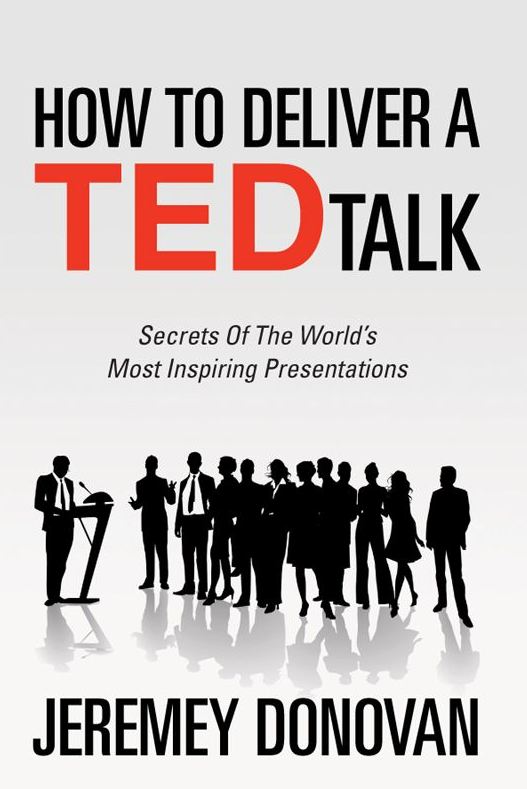Would you like to know the secrets of the world’s most inspiring presentations?
In his book, How to Deliver a TEDTalk, Jeremey Donovan shares nuggets of wisdom mined from studying the most popular TED Talks. Just in case you are somehow unaware of TED Talks, TED is a nonprofit organization dedicated to spreading worthy ideas through “riveting talks by remarkable people, free to the world.” Their exclusive conferences are expensive, but the talks are freely available online.
Donovan’s book, easily read in one sitting, is divided into 2 sections: Part I covers content, story and structure, and Part II covers delivery and design.
If you are a serious student of public speaking, there will not be much new information; however, framing the advice in the context of TED talks is what makes the information seem fresh. In fact, I was inspired to watch a few TED videos after reading the book, and that alone makes the book worth reading.
One of my favorite chapters was “How to Craft Your Catchphrase.” Here is a summary of that advice:
- Keep it short. Three words are best, but you can go up to twelve. Some examples from President Obama: “Hope and Change”, “Yes We Can”
- Issue a clear call to action. Examples:
- Simon Sinek’s TED talk: “Start with Why”
- Johnny Cochran’s jury instruction in the OJ Simpson trial: “if it doesn’t fit, you must acquit.” (referring to the infamous glove)
- Employ a musical, often rhyming structure
- Repeat words at the beginning (anaphora) or end (epistrophe). Example from Dickens Tale of Two Cities: “It was the best of times, it was the worst of times, it was the age of wisdom, it was the age of foolishness . . .”
- Repeat the same word in different parts of the phrase. Example from Simon Sinek “People don’t buy what you do, they buy why you do it.”
- Punch up the two-part catch phrase:
- Make the second part positive and sharply contrasting with the first part (“people don’t buy what you do . . .” cause the audience to think, “well, what do they buy?” which is answered by the second part of the phrase, “ . . . they buy why you do it.”
- Put the punch word or punch phrase at the end. “You must acquit if the glove doesn’t fit” doesn’t build to the punch the same way that “If the glove doesn’t fit, you must acquit” does.
Donovan is clearly a student not only of TED videos, but also of Toastmaster World Champion speakers, as he quotes both Craig Valentine and Ed Tate in this little gem of speaking wisdom.
Get the book and/or watch some TED videos and be inspired to share your ideas with the world!
Thanks to subscriber Joe Sharp for lending me this book!

